Try to imagine a creamy tiramisu without rich mascarpone, a cheesecake without the subtle tang from cream cheese, or a breakfast bowl of berries without that extra protein boost of some cottage cheese.
Exactly… none of them would be the same!
The range of products that belong to the group of soft, fresh cheeses is large and versatile. But they all have some basic characteristics in common.
The most important aspect that differentiates them from other categories of aged varieties is that they do not require a long maturing process in order to be sold and eaten.
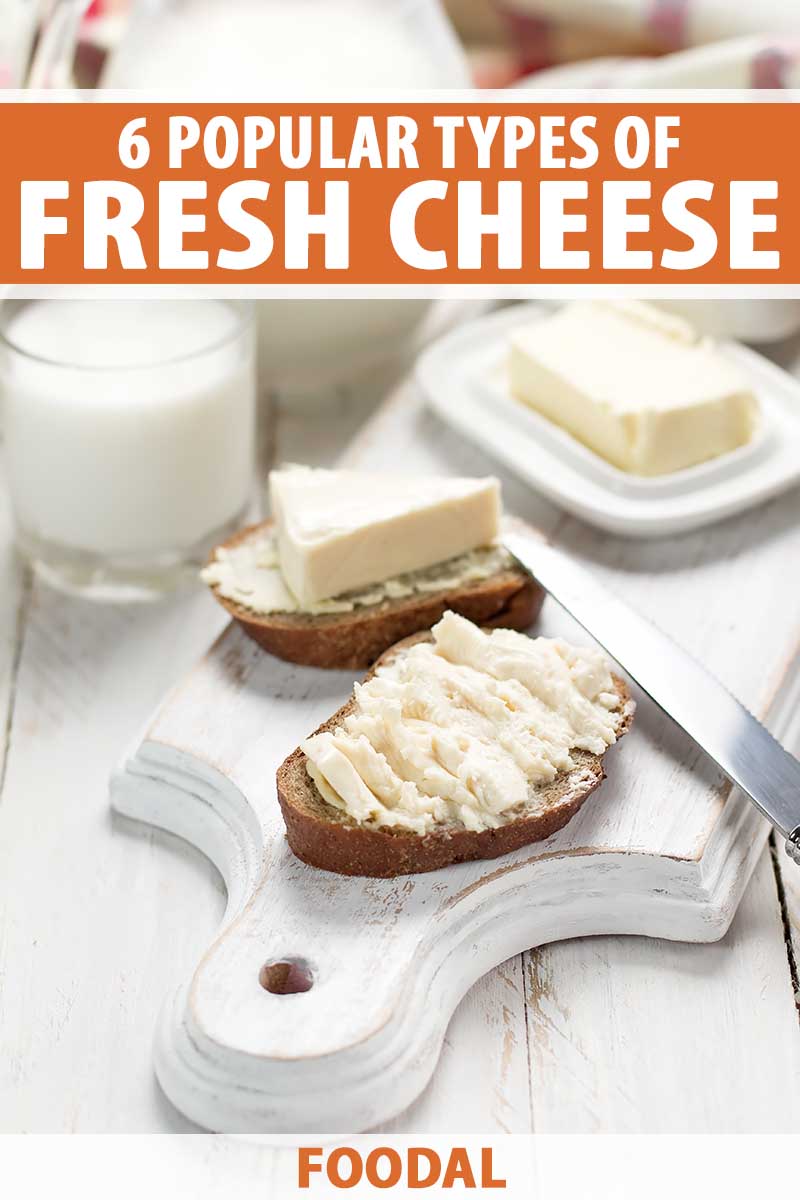
Fresh and unripened, they are all intentionally ready to eat within a few days or weeks, if not hours, directly after production.
Because of this short maturing time, soft and fresh varieties do not develop a rind, and typically fall within the spectrum of having mild, lactic flavors.
And with the highest moisture content out of all the categories, the majority of fresh options have a limited shelf life, especially after you open any form of a vacuum-sealed package.
To maintain the best quality of your purchase, keep your unaged dairy products in the fridge, dispose of them after the expiration date or when they show signs of deterioration like molds or foul smells, and consume them within a couple of days once opened.
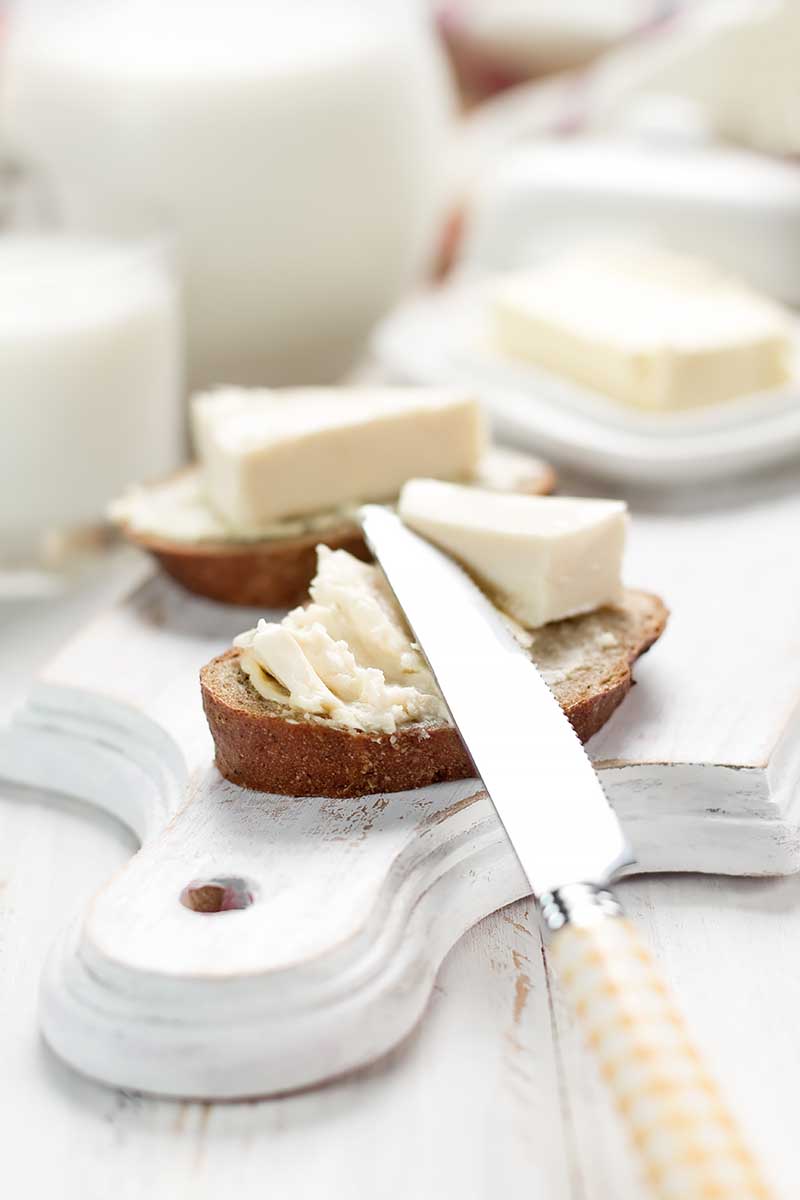
But, as you’ll soon discover, not all fresh cheeses are created equal!
While they share some foundational characteristics, there is a world of difference in style, flavor, texture, production, and culinary application.
Let’s take a look at six popular types of fresh cheeses, to help you decide which one to feature on your menu next.
6 Popular Fresh Cheese Varieties
1. Cottage Cheese
Light, fluffy, and curdy, this type is typically made with pasteurized skim milk with the addition of lactic acid bacteria, rennet, and/or high-acid liquid like citrus or vinegar to quickly set the milk into fragile curds.
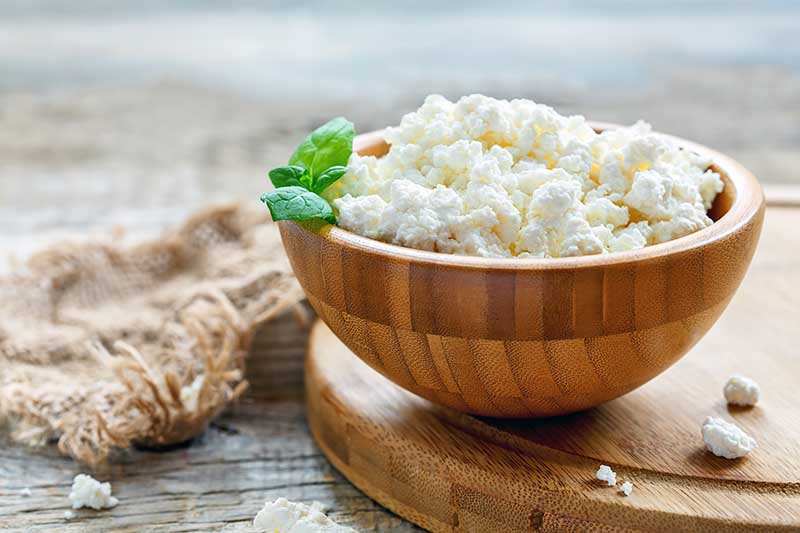
In production, the curds are usually given a cold-water bath to wash away any continued development of acidity. After washing and draining, the curds can be salted and mixed with cream or milk.
When you’re feeling crafty, opt to make it from scratch at home! It’s actually easy to do, and only requires just a few ingredients.
Our method is for a quick-setting cottage cheese, made by heating whole milk to a high temperature and mixing in white vinegar.
For a savory spread or dip, you can flavor the base with fresh herbs like chives or parsley, or mix in your favorite spices. Serve with cucumber, bell peppers, or other raw vegetables for a spot of color on your plate.
The mild, milky flavors also do well with a sweeter interpretation, topped with maple syrup, granola, and fresh berries or other fruit. You can also enjoy it on toasted bread with some jam or honey on top.
And I’ve made some really moist and fluffy pancakes when I mix some in my batter for a delicious breakfast treat!
2. Cream Cheese
A ubiquitous symbol of all-American industrialization, cream cheese in the United States is an incredibly soft and smooth pasteurized cow milk style.
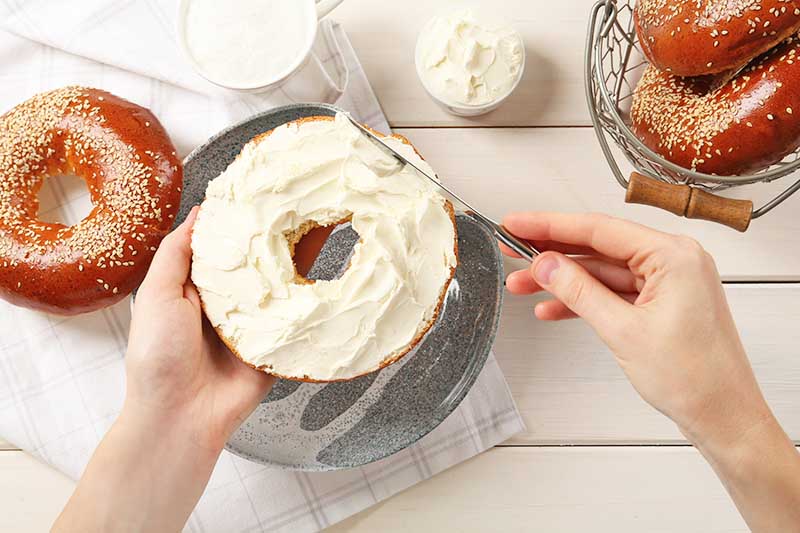
The addition of stabilizers such as guar gum and carob gum is common in order to standardize its rich, thick consistency and to extend its shelf life.
As long as the total amount does not exceed .5% of the weight of the finished food, stabilizers are an approved ingredient in the commercial production of cream cheese, as explained in the United States Code of Federal Regulations of the FDA.
Lauded for its tangy taste and homogeneously creamy texture, it is an essential component in thick and delectable American-style cheesecakes.
And we can’t forget how special it is when whipped into frostings for decorating classic red velvet cake, carrot cake, and cinnamon rolls!
There’s also nothing like a smooth and tangy smear – upgrade your bagel game with our recipes for corn dip, cherry spread, and pumpkin spice spread.
3. Fromage Blanc
Literally translated to “white cheese,” fromage blanc is native to northwestern France, and is usually made with pasteurized cow milk, but can also be made with goat milk.

Traditionally using the skimmed milk that is left over from butter production, cream is often added back in to improve the flavor and support a richer consistency.
High-quality fromage blanc is allowed to acidify overnight – this longer, slower acidification process yields a tartness that perfectly balances the milk’s creaminess.
With a thick, spreadable texture, fromage blanc can be used for smearing on toast, muffins, scones, crackers, crudite, and sandwiches.
You can also use it as a rich replacement for plain yogurt in a multitude of recipes. Try it as a substitute in our recipes for spicy yogurt cilantro sauce, or in our creamy chicken parmesan bake.
4. Mascarpone
This incredibly smooth and silky Italian cow milk product is a sultry melt-in-your-mouth creation!
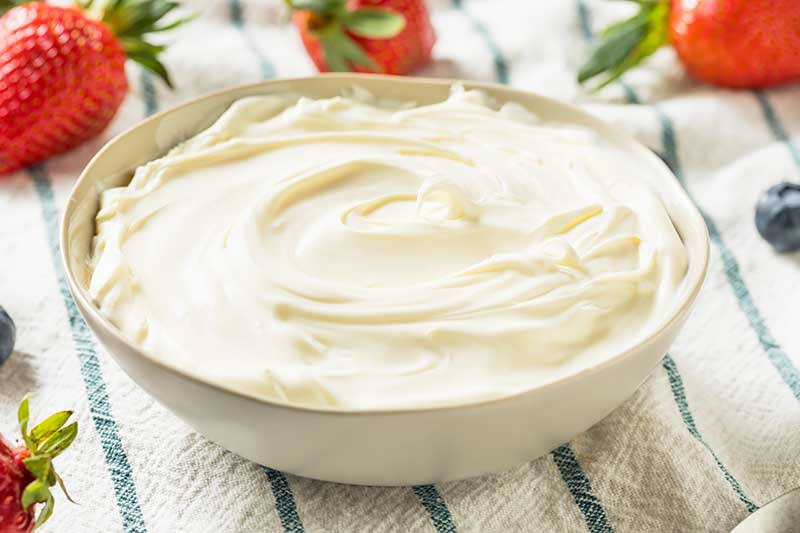
The unique quality of mascarpone is that it starts with a base of full-fat cream rather than milk.
It has an inherent sweetness and a buttery aroma, ideal for making desserts such as a classic tiramisu with layers of ladyfingers dipped in espresso and a creamy vanilla mousse.
But there’s no need to limit mascarpone’s full potential – it isn’t just for sweet treats!
Try mixing a dollop into your pureed soups, like carrot or potato leek, or in your next tomato sauce for pasta night.
5. Quark
Quark has a widespread popularity in Europe, particularly in German-speaking and other northern European countries.
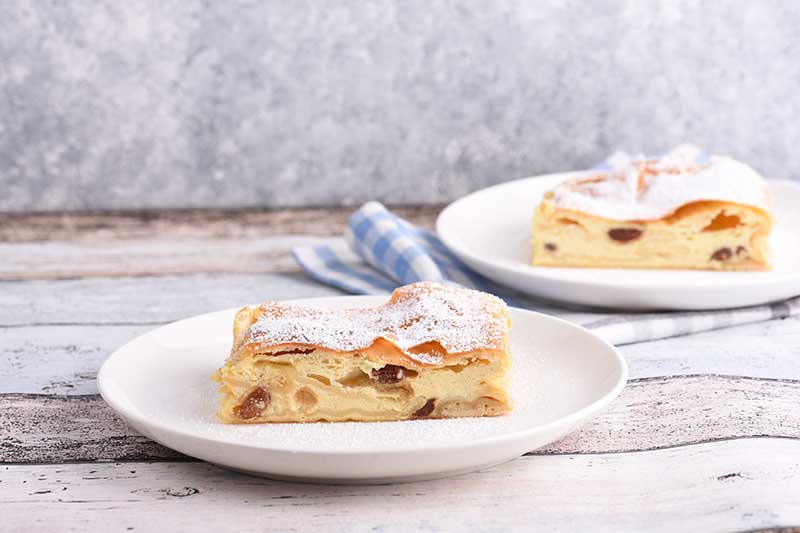
Quark has a longstanding presence in Germanic history, and is traditionally made by manually draining naturally coagulated soured cow milk.
However, commercially-produced quark can now be made through industrialized practices, such as adding rennet to facilitate coagulation and using centrifuges to separate the whey from the solids.
There are many regional differences in its production, and it can be referred to by different names depending on the location.
The most notable commercially available style is called Schichtkäse or Handkäse, produced in northern parts of Germany. This style of quark is made up of layers – the top and bottom layers use a skim milk curd, while the middle uses a whole milk curd.
Quark is an essential ingredient in German-style cheesecakes, and it can also be popularly found in pierogi, pancakes, strudel, and other desserts.
Although it has many uses, quark is simply excellent topped with fresh berries or other fruit.
6. Ricotta
Italian ricotta is a versatile product with a light and fluffy texture. It can be made of cow, sheep, or buffalo milk.
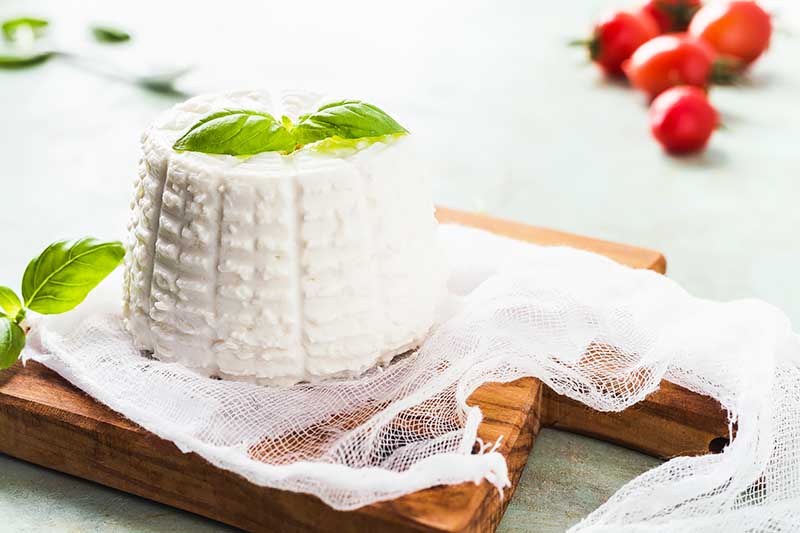
The name loosely translates to “re-cooked” in Italian, indicative of the original process for making ricotta:
Liquid whey that is left over from cheesemaking was recooked at a high enough temperature to separate any remaining fats and proteins, which were then skimmed from the water to make a secondary batch of fresh cheese.
In modern production, ricotta can now be made with a blend of milk and whey.
Its fat content can vary, and there are many commercially available products – you may see a few different options at your grocery store for low-fat or whole-milk selections.
Ricotta has a completely different consistency when allowed to age – ricotta salata is a popular aged version, which is a drier, firmer product suitable for crumbling.
It is also available in a baked format, called ricotta infornata, which develops a thin, toasted rind and a soft, crumbly center.
Fresh ricotta is often used as a filling for many savory dishes, like stuffed peppers, calzones, ravioli, and eggplant rollatini. Together with spinach or fresh herbs, it makes an unbeatable addition.
You’ll also enjoy it layered in lasagna, or thickly spread on a pizza dough base – try it in our recipes for an einkorn tomato basil pastry and our peach, basil, and ricotta flatbreads.
It is also an ideal ingredient in a sweet cannoli filling – you can try our fun variation of this classic Italian dessert with our recipe for einkorn cannoli cupcakes!
A Fresh Perspective
These six examples only graze the surface of an entire category of fresh, soft cheeses!
Talk to your local cheesemonger to discover even more varieties – lactic, soft, milky, sweet, lemony, herbal, citrusy, and acidic, fresh cheeses are boundless, all with their own unique personalities.
With their youthful spirits, untouched by age, they represent one of the most refreshing and most versatile varieties of cheese you can easily use in your everyday entertaining.
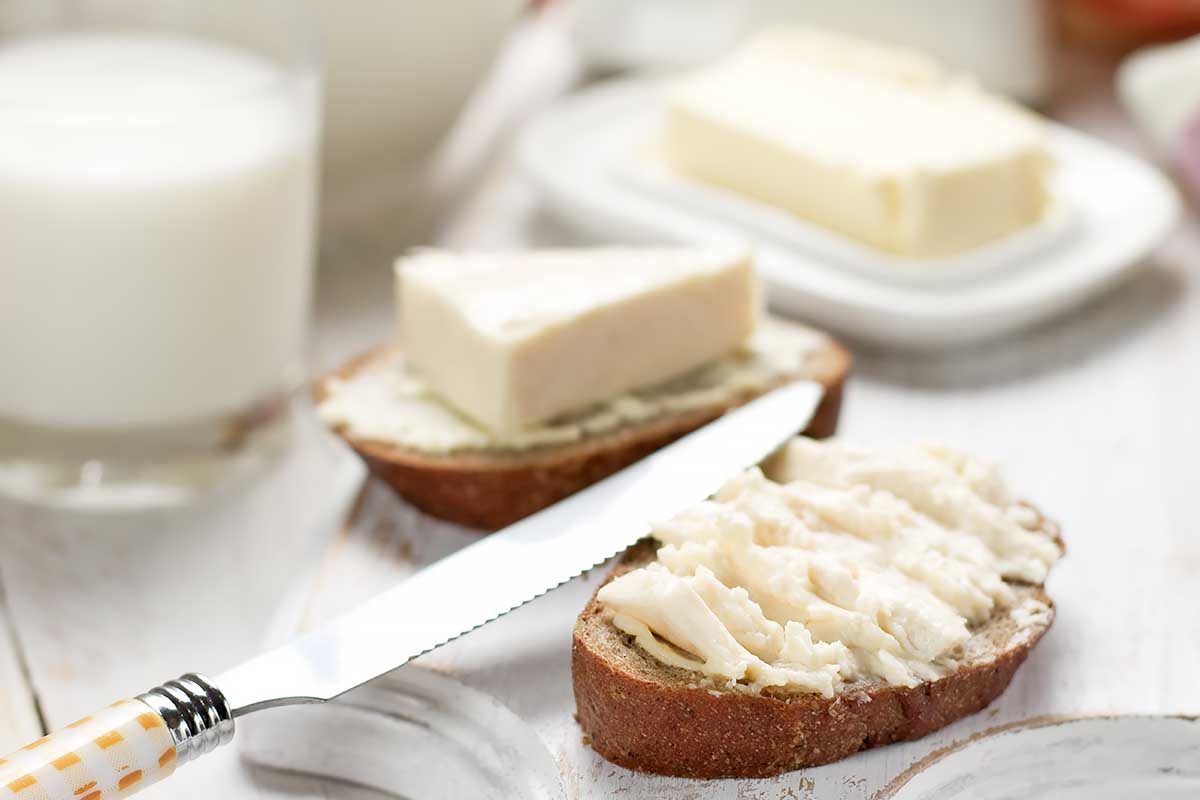
What’s your favorite variety we discussed in this article? Is there another style we didn’t discuss that you love to buy… or even make from scratch?
Share your thoughts, comments, and ideas below!
Dive deeper into the delectable world of dairy – there are so many products out there to learn more about, ones that you often see when rushing up and down the aisles of your grocery store! Take a look at three more of our own informational articles:
About Nikki Cervone
Nikki Cervone is an ACS Certified Cheese Professional and cheesemonger living in Pittsburgh. Nikki holds an AAS in baking/pastry from Westmoreland County Community College, a BA in Communications from Duquesne University, and an MLA in Gastronomy from Boston University. When she's not nibbling on her favorite cheeses or testing a batch of cupcakes, Nikki enjoys a healthy dose of yoga, wine, hiking, singing in the shower, and chocolate. Lots of chocolate.

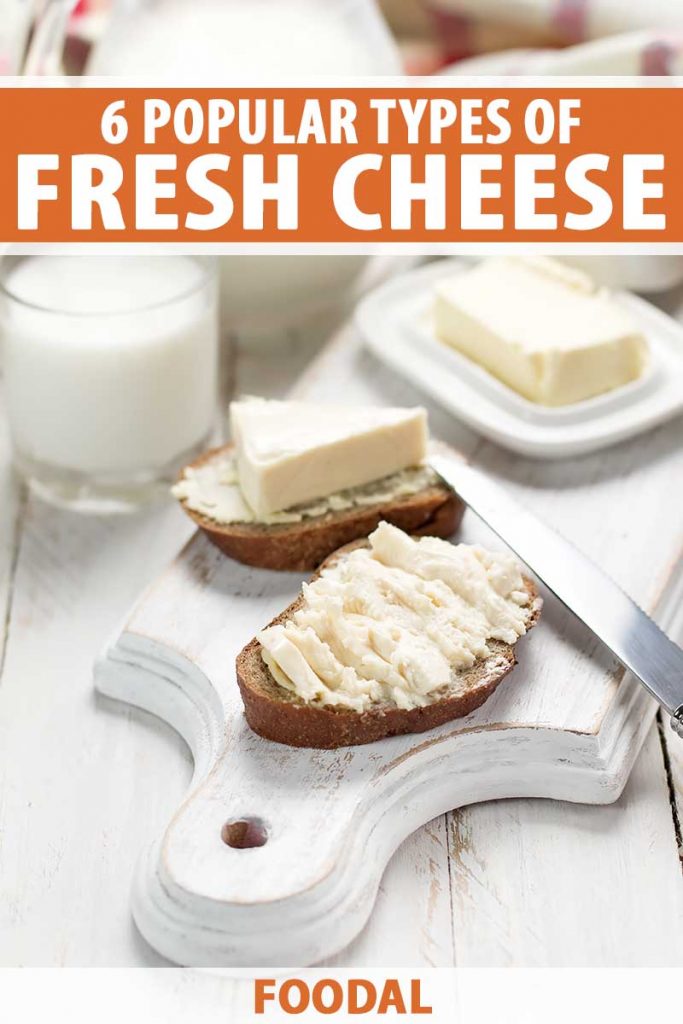



I had no idea sour cream was a kind of cheese. Interesting.
The only time I’ve ever heard of Mascarpone was on a children’s cartoon when one of the characters mentioned using it in a cake. I would have never guessed it was a type of cheese either.
At a first glance, one wouldn’t think that sour cream belongs here, right? The overall category “cheese” combines the most different products, that’s for sure. It’s funny that you have seen Mascarpone on a cartoon. But it is providing a nice idea: using this in a cake will make it smooth and rich, yummy!
This has been very enlightening; it shows how much cheese plays a significant role in our diet. As an African, we were not raised eating cheese or making sumptuous combinations; but moving to the Middle East, I have been exposed to all of its varieties. My friends in Europe and America cannot do without it and I must admit with this article, it is an eye opener to view dairy products in a different way.
I agree with you. Cheese varieites in all forms have become a daily part of the menu for so many people. But I think it is very interesting that this doesn’t apply to all countries. The eating habits around the globe are so different, I always enjoy reading books about various cusines and cultures and learn more about it.
The versatility is huge and allows us to combine them in the most different ways. I’m glad you enjoy the article.
Wow, there was a lot of new information here for me that I hadn’t known before! I like cheese but I’ve been eating less of it since my daughter can no longer eat it due to tummy issues with the casein.
My favorite? Well when it comes to cooking, I like ricotta best. Can’t beat that flavor in Italian dishes and things like stuffed pasta shells or lasagna.
In the past, I never liked cottage cheese very much, but I’ve started eating it now and find that I *do* like it, so I plan to continue. 🙂 I like it with fruit… I’ve been eating “pineapple on the bottom” and it’s wonderful… I guess they got the idea from “fruit on the bottom” yogurt!
Yeah, ricotta works fantastic for things like lasagna or stuffed pasta. And I totally agree with you about the “fruit on the bottom” thing. I like to take some deep spoons and get the whole flavor-mix 🙂 And cottage cheese is a good choice for that!
What a pity that your daughter has some trouble with it. I also have to be on the lookout and don’t eat too much of dairy products in general, otherwise I’ll get some stomach pains. But every now and then I really enjoy it.
This is fascinating; I never knew that sour cream was a cheese. Cottage cheese with fruit is tasty and a great breakfast go-to for me.
I have heard of mascarpone and had it in dessert. Using it in a savory dish, such as a soup sounds interesting. I would love to make a tomato soup and add the mascarpone. I am looking forward to using these products in new recipes.
That is a perfect breakfast, isn’t it? It’s not too heavy, yet filling and refreshing – a nice way to start into the day.
You should really go ahead and try it with tomato soup, that will be worth it. Mascarpone is going to add some creamy and rich nuance. I’m happy that you’ve found some inspiration here!
I’m going to say, that my favorite soft variety is actually sour cream. I just love adding it to soups and adding a dollop on many Mexican dishes…okay maybe more than a dollop, but I sure do love it. I make a simple pasta dish with a roux, some chicken broth, some roasted garlic, sour cream and parmesan cheese that my kids love. The always say it reminds them of mac ‘n cheese, but with spaghetti noodles.
I also love adding sour cream to hot and spicy dishes, it is a great way to get some balance! And the dish you talk about sounds delicious! Parmesan is one of my favorites, too. So I can definitely see that this combination makes your children happy 🙂
I love cheese so when I read this I was thinking I was going to read about those varieties I have tried! Nope! I’ve only had two of these out of them all. I had no idea sour cream was related to cheese. I always considered it closest to yogurt. That may be silly but you usually can substitute one with the other. Made sense to me. Very informative!
Hey, it’s nice to hear that you could discover some new varieties you haven’t heard about before 🙂 When it comes to the consistency, I think sour cream and yogurt seem like they belong to the same “group” of food, I agree. And one can often replace them, you’re right about that. Both have a lightly sour, but mild and creamy flavor. Works great with lots of recipes!
Wow the only type I’ve tried before is the cottage and sour cream. I guess all the ones that I have been eating are pure processed cheese.
Yum. All of this just looks so rich and delicious. You made me want to go into the kitchen and start baking. Of course, I don’t have most of those items on hand, so I’d probably need to run to the store first. I do have some cottage cheese though, since I generally have it on hand (I can make quite a few tasty things from that).
I would definitely like to try some of these options. They can be used for taste as well as for presentation. I enjoy pretty food.
It’s good to always have some things in store, right?And cottage cheese is a good one, versatile to work with. I agree with you about presentation of food, I think this is an important thing. And these types work well for this purpose. Enjoy!
I had no clue that people ate blueberries with cottage cheese – something new to try this weekend! I grew up in a Vietnamese family and about 99.7% of my relatives were lactose intolerant, so I haven’t really had much exposure to cheese until the last five or so years. My favorite way to use cheese is to put creme fraiche on my crepes or cream cheese in fried wontons. I definitely need to try some of the things on this list, so thanks for posting this!
Nice to hear, did you try the blueberries with cottage cheese yet? I can see that crème fraîche on crêpes works perfectly. I think, with some fruit or honey added, it is a wonderful meal. And the fresh cheese provides some refreshing taste to everything.
Thank you for this great article Nina-Kristin. I totally love cheese. It is one of my many weaknesses, so I’m always on the lookout for a type of cheese I’ve never tasted before. My problem lies in that sometimes I buy a new different type of cheese and don’t know what to match it with. Thanks for giving me ideas on what to accompany cheeses and for introducing me to Mascarpone cheese and Curd cheese which I’ve never tried.
I know what you mean. Sometimes, we want to try new products or varieites and end up with no idea how to use them. So right now, you will have an idea for Mascarpone! I can recommend it, it is so creamy and rich (not a variety for each day 😉 ) but definitely one to enjoy every now and then as an addition to many recipes.
My boyfriend is Italian so when I’m cooking his favourite pasta recipes I end up using ricotta quite frequently. I love mixing it with chopped spinach, grated mozzarella, and a little parmesan, and then using it to stuff pasta shells. It’s really yummy with marinara sauce and some roasted asparagus or zucchini on the side 🙂
Wonderful! I could have those stuffed pasta shells right away! 😉 I really love this shape, because you can get so creative with them. And ricotta is definitely a perfect choice here. Thanks for your tasty inspiration!
I am a cheese lover, but this post just puts it on another level. The variety of cheeses and ways to use them is actually endless. Thank you for posting
I’ve never heard of quark before this article. I can’t say that it looks appetizing, but I would definitely try it out. Based on the picture it seems to be more of main component like cottage cheese than a topping like sour cream. Is this correct? I live in a place with lots of farmer markets and I bet I could track down some quark with due diligence.
Right, it is often used as a main ingredient, like fruit quark for dessert. But one can also mix it with herbs and add to baked potatoes. It is also part of a special kind of dough that is famous in Germany, too: it’s made of quark and oil and suitable for savory or sweet cakes. There are low-/ and high-fat varieties. The latter sorts are really creamy! I hope you can find some on the markets nearby and have a try yourself 🙂
Thank you I love them all!! I have fresh milk and cream from the farm, kefir is getting old looking to expand my horizons by making a fresh cheese.